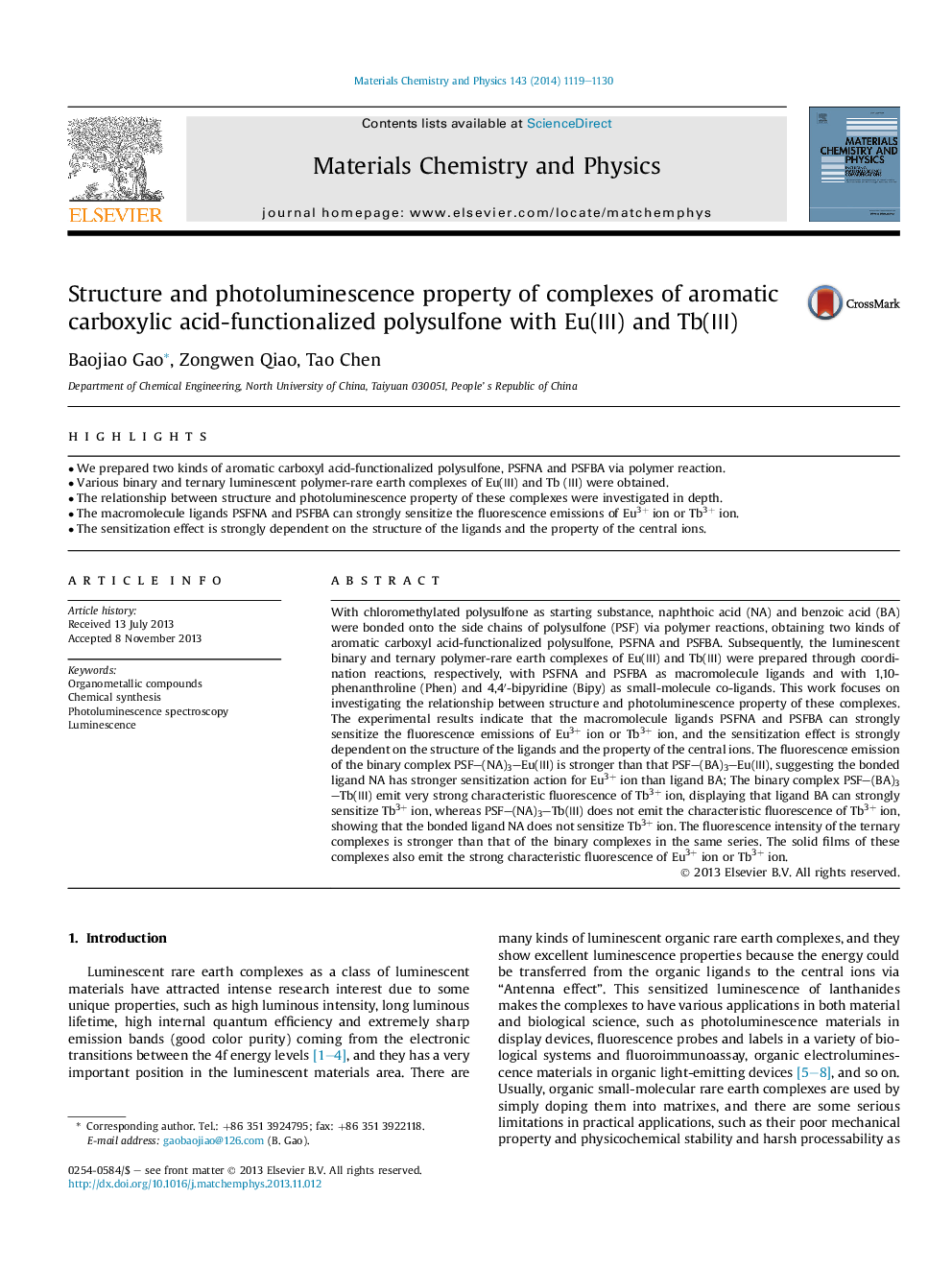| Article ID | Journal | Published Year | Pages | File Type |
|---|---|---|---|---|
| 1522225 | Materials Chemistry and Physics | 2014 | 12 Pages |
Abstract
With chloromethylated polysulfone as starting substance, naphthoic acid (NA) and benzoic acid (BA) were bonded onto the side chains of polysulfone (PSF) via polymer reactions, obtaining two kinds of aromatic carboxyl acid-functionalized polysulfone, PSFNA and PSFBA. Subsequently, the luminescent binary and ternary polymer-rare earth complexes of Eu(â
¢) and Tb(â
¢) were prepared through coordination reactions, respectively, with PSFNA and PSFBA as macromolecule ligands and with 1,10-phenanthroline (Phen) and 4,4â²-bipyridine (Bipy) as small-molecule co-ligands. This work focuses on investigating the relationship between structure and photoluminescence property of these complexes. The experimental results indicate that the macromolecule ligands PSFNA and PSFBA can strongly sensitize the fluorescence emissions of Eu3+ ion or Tb3+ ion, and the sensitization effect is strongly dependent on the structure of the ligands and the property of the central ions. The fluorescence emission of the binary complex PSF-(NA)3-Eu(â
¢) is stronger than that PSF-(BA)3-Eu(â
¢), suggesting the bonded ligand NA has stronger sensitization action for Eu3+ ion than ligand BA; The binary complex PSF-(BA)3-Tb(â
¢) emit very strong characteristic fluorescence of Tb3+ ion, displaying that ligand BA can strongly sensitize Tb3+ ion, whereas PSF-(NA)3-Tb(â
¢) does not emit the characteristic fluorescence of Tb3+ ion, showing that the bonded ligand NA does not sensitize Tb3+ ion. The fluorescence intensity of the ternary complexes is stronger than that of the binary complexes in the same series. The solid films of these complexes also emit the strong characteristic fluorescence of Eu3+ ion or Tb3+ ion.
Related Topics
Physical Sciences and Engineering
Materials Science
Electronic, Optical and Magnetic Materials
Authors
Baojiao Gao, Zongwen Qiao, Tao Chen,
